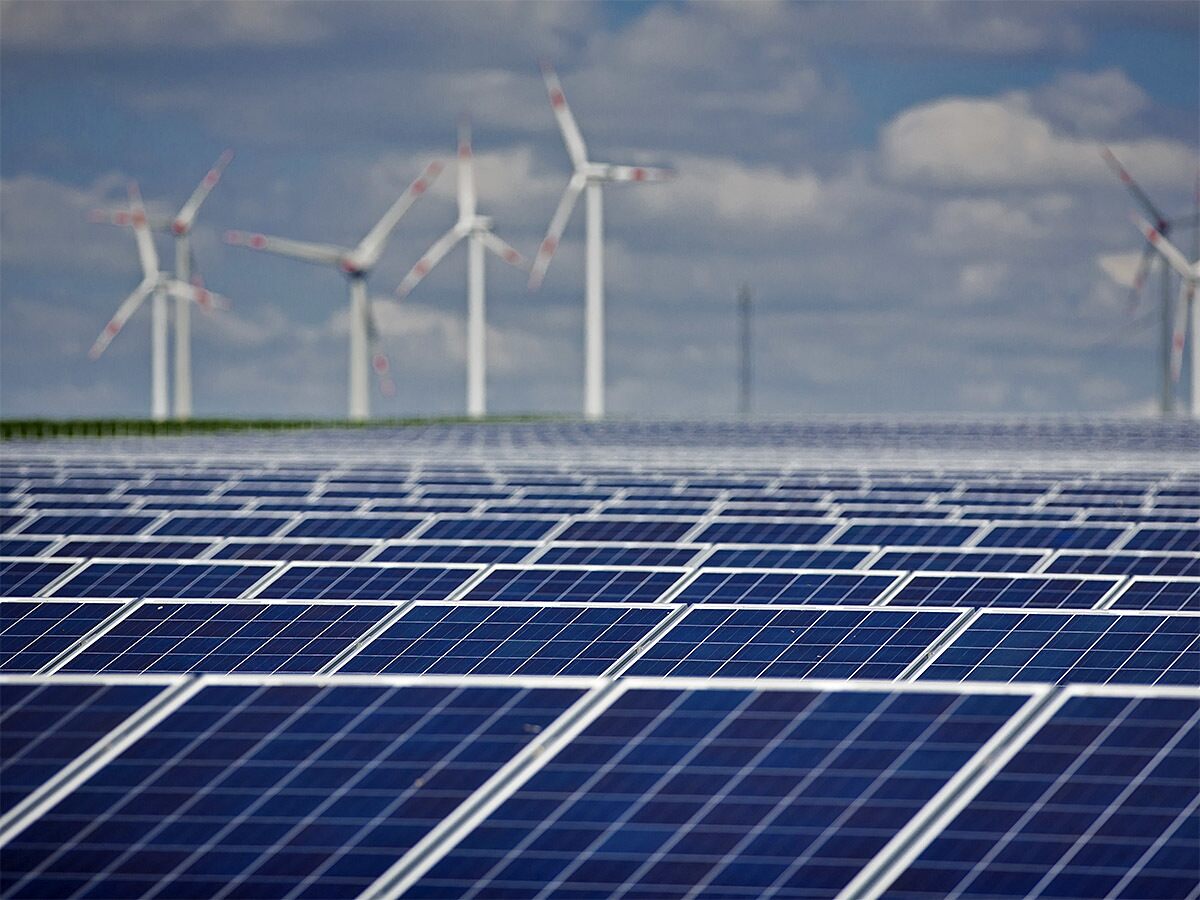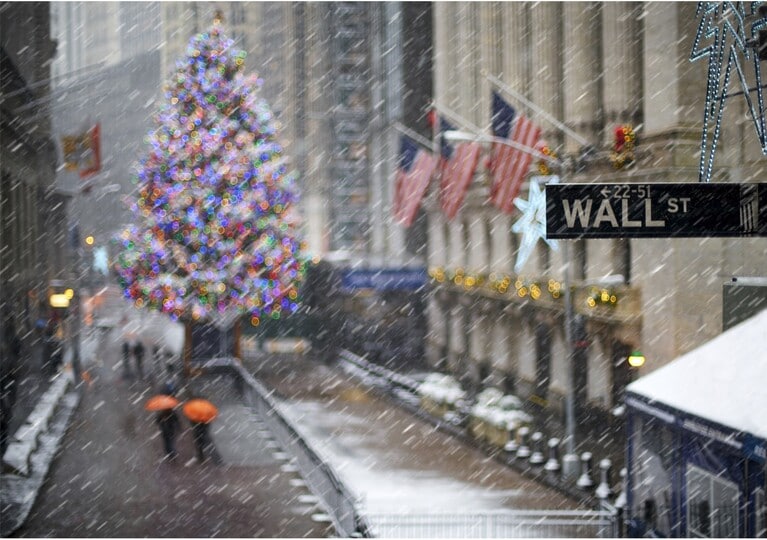While 2020 was a good year for stock markets, one of the major outperformers was in renewable energy which managed to outperform every other single sector, including the mega caps of Apple, Amazon, Microsoft, and Alphabet.
As suspected when we looked at this a year ago, there was a concern that the market was seriously over stretched, and sure enough earlier this year we saw some of the heat come out of the renewables rally.

Source: ALFATRADING-MARKETS.
Having seen gains in excess of 250% by the start of this year, we have started to see a bit of a correction, and a pause, which when you look at the fundamentals of a lot of the companies in the Renewable energy basket wasn’t altogether surprising.
Even the more established companies in the renewable energy space have struggled this year, although they have performed well over a longer period.
Denmark for example, has two well established companies that specialise in offshore and onshore wind, in Orsted and Vestas Wind Systems.
These two companies have a much better and durable pedigree in this space, as shown by the graph below, however its notable that in 2021 they have similarly struggled to move higher, and are both down by over 25% since the start of the year.
Investment in wind power, and renewables in general remains a capital-intensive process, and margins aren’t anywhere near as big as they are for fossil fuels, where the oil majors can also create and sell by-products of their core product.
Comparison chart Orsted/Vestas Wind Systems since 2020

Source: ALFATRADING-MARKETS
This difficulty is reflected in the capex numbers for Orsted, which has seen annual capex rise from DKK17.6bn in 2017, to DKK31.58bn in the nine months for its current fiscal year, with the intention to spend up to another DKK350bn, or about $54bn by 2030, to increase its currently installed capacity from 12GW to 50GW.
This is a significant increase in spend for a company that has seen its revenues average around DKK65bn since 2017.
As a more mature business in this space Orsted also has the luxury of being profitable, recording a €960m net profit in the first half of this year, though some of this was due to the divestment of 50% of its offshore wind operation on Borssele 1 & 2 in May.
For the nine months year to date revenues came in at €4.2bn, despite offshore wind power generation decreasing by 1.0 TWh, compared to the year before. This will always be an issue with respect to wind power generation, as with most renewables’ revenue. You are at the mercy of the elements, and lower wind speeds mean lower revenues, all the while investment in new capacity require significant upfront costs.
This year the business has spent €2.2bn on new projects in Greater Changhua in Taiwan, Hornsea in the UK, as well as developments in the US and Poland.
With the cost of raw materials like copper becoming more expensive the transition not only to wind but also solar is only likely to become more expensive.
This perhaps helps explain some of the underperformance seen this year when it comes to the CMC renewables energy basket. That, and the fact that not many of these companies are profitable yet.
Renewable energy basket YTD

Another notable takeaway from this year has been how oil and gas has outperformed renewable energy, however this doesn’t account for the fact that oil and gas had a dreadful 2020, the major energy companies incurring $76bn in losses collectively and has only just about recovered the ground the sector lost during that period.
Oil and gas vs renewable energy 2021

Source: ALFATRADING-MARKETS
As we look ahead to the rest of the decade the calls for a transition to renewables has got louder, along with calls that governments actively discourage funding for new sources of fossil fuels.
While one can understand the rationale behind this thinking, indeed one of the first acts of the new US administration of Joe Biden was to cancel the Keystone pipeline as well as calling a halt to all new drilling operations on Federal land. This, however, has turned out to be a huge mistake as is so often the case when politicians adopt a knee jerk reaction to a popular political cause.
As the global economy has picked up in the wake of the easing of lockdowns, demand for oil and gas has also risen, and while it’s easy to demonise oil companies to score cheap political points, the fact remains that they are the beating heart of the global economy and will be for some time to come. They are part of the solution in the transition to renewable energy, as the demand for fossil fuels declines. It won’t disappear overnight given the multitude of other products that oil is used in the production of.
There is some truth to the argument that the big energy providers have been slow in embracing these new technologies, however they no longer have that excuse, but they will still have to rely to some extent on the business model that has generated so much cash for the last 50 years in order to manage the transition effectively.
Moving to renewables isn’t going to be a light switch transition. It will need to be done on a slow burn basis so that energy price rises don’t drive millions of people into fuel poverty, in a mirror of what is currently happening now.
In this regard the coronavirus pandemic has been a game changer, and while the Democrat’s “build, back better” economic program, has much to commend it, the program also needs to be less political and more pragmatic.
That said the much greater focus on renewables over the next four years is now set to become a fact of life in respect of US energy policy, and while this year has seen a pause on the gains seen in 2020, and saw a decent correction at the start of the year, the direction of travel when it comes to renewables still appears to be for further upside.
The ALFATRADING-MARKETS Renewable Energy basket contains companies that specialise in the following renewable technologies of wind power, solar, hydroelectric along with the development of battery technology.
Of the 18 companies in the share basket above the biggest five make up 51.8% of the total weightings.
They are;
Enphase Energy 17.76% - has had a decent year so far, the company makes all in one solar panel systems for residential and commercial use across North America, with 85% of its sales in the US. It does operate in international markets, including the UK, France, China and Australia. In 2019 the company had a market cap of $3.2bn. A year ago, this increased to $16bn, and has doubled since then to over $32bn, with the company on course to increase its annual revenues from $774.4m in 2020, to $1.37bn this year, and is expected to more than double its profits for this year to $2.30c a share.
Maxeon Solar Technologies 11.59% - has had a disappointing year this year. The company was spun off from SunPower Corp in August 2020, and concentrates on manufacturing the solar panels, and operating the SunPower brand in global markets while SunPower itself focuses on the US and Canada. Maxeon operates in over 100 countries, focussing on residential and business customers, and doesn’t appear to be making a very good job of it. In its latest quarterly outlook, the company reported negative margins in an area where other companies are making a profit. Total revenues for this year are expected to come in below last year’s number of $844.8m, while its losses are expected to increase as well.
First Solar 11.51% - unlike its peers First Solar makes solar panels that are primarily used in solar farms, with the US market making up to 85% of its sales. One of the biggest solar power companies with a market cap of over $11bn it has struggled to grow its revenues from its 2019 peaks. It is this inability to grow its revenues significantly which appears to be holding it back with expectations of generating annual revenues of $2.9bn in this current year, above last year’s $2.6bn. This probably helps explain why its shares are only modestly higher this year after the gains in 2020.
Plug Power 6.04% - has had a volatile year, the shares peaked at $75 in January before crashing as low as $18.47 in May. The company designs, develops and manufactures fuel cell systems for electric, forklifts, trucks and other vehicles. Focussing on green hydrogen fuel cell systems that power electric motors its main clients include the likes of BMW, Carrefour and Walmart. The company has a market cap of $23bn and its hard to understand why when you look at its revenues in 2020, which were negative due to large scale billings of $456m. The company still trades at a loss, and that doesn’t look like it’s going to change anytime soon, although revenues this year should come in at $500m, which would be a record. Management wants to increase revenues to $1.2bn by 2024, which is a laudable goal, however it needs to get on top of its cost of sales.
SunPower Corp 4.91% - specialises in the installation of solar panels systems, as well as the battery storage systems for residential and commercial buildings in the US and Canada. It has two divisions, energy services and industrials business. Energy services accounts for half the company revenue and the industrials division is the other half, although it is looking to spin off the industrials side. The company recently acquired Blue Raven, a residential solar provider, as it looks to focus on the residential side of the business. Annual revenues have been in decline in recent years, with the split with Maxeon seeing 2020 revenues fall to $1.12bn. That said after the losses of last year, the company is expected to turn a modest profit for 2021 of $0.15c a share, with revenues expected to improve to $1.3bn.
As can be seen from the examples above there is a huge amount of interest in the renewable energy sector with a lot of innovation, however when looking at the fundamentals, while profits have been improving, we’ve also seen increases in costs, due to chip shortages and supply chain disruption.
Despite this, the long-term prognosis suggests there is a lot of scope for growth. At the end of 2020 it was estimated that only 3% of US households had solar panels. President Biden’s climate agenda has a target of 40% by 2035. That’s a lot of solar panels, as well as semiconductors, and all the other related parts.
The next two years are likely to be interesting times for renewables with winners and losers alike. In times like this spreading your risk is safer than adopting a pick and mix approach to investing and baskets can be helpful in spreading that risk.





